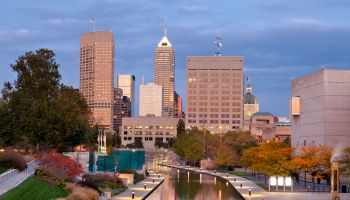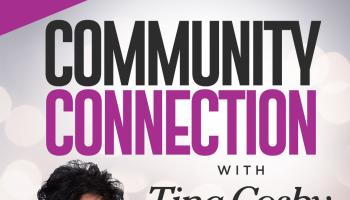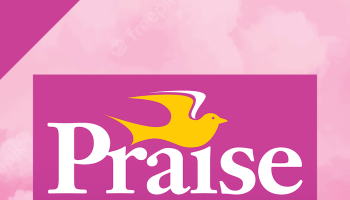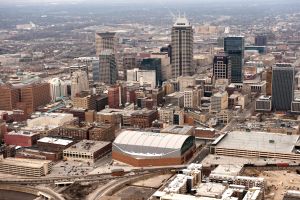
Source: Getty
AFTERNOONS WITH AMOS ANALYSIS Despite having stronger population growth this decade compared to last, Indianapolis faces being outranked as a top American city by faster growing big cities in the south and west. That’s one of the results of the release Thursday (May 21st) of 2014 population estimates for American cities by the Census Bureau. The 2014 Census estimates also show that Carmel and Fishers are virtually tied as Indianapolis’ largest suburb and Indiana’s fifth biggest city. With Fishers on a pace to finally surpass its Hamilton County neighbor as top Indy area suburb as early as next year. But the big story is Indianapolis’ potentially declining rank among top cities. Driven in part by the peculiar way Indianapolis structured its consolidation in 1971 and how the Census Bureau calculates that consolidated population. The 2014 Census estimates reports Indianapolis now ranks 14th, a drop of two places since last year. That’s based on a Census calculation called Indianapolis (balance) that estimates Indianapolis’ population at 848,788. A calculation that excludes those living in Lawrence, Beech Grove, Speedway and Southport; along with small mini communities like Wynnedale, Williams Creek and Rocky Ripple. But another Census population calculation includes those mini communities and estimates Indianapolis at 858,325. This would rank Indianapolis the 12th largest American city. Afternoons with Amos has traditionally regarded Indianapolis’ population as the full consolidated city and county. Since city/county residents all vote on Indianapolis’ Mayor. That would make Indianapolis 2014 population 934,234; 11th largest. Confusing? It’s been that way since Indianapolis became a consolidated city. The Census Bureau has contributed to this population confusion and Indianapolis leaders have never petitioned the Bureau or Congress to clarify it. But a city’s ranking is a tool that helps draw in business and jobs. Asked to comment on whether the confusion in Indy’s ranking among cities and the potential drop in rankings would have an impact, Chris Gahl, Vice-President of Visit Indy (Convention Bureau) said, “Indy competes daily with other major cities to score conventions and win events. We integrate Indy’s population ranking into our marketing, as we know when selecting a city, this is one of many factors examined. We need every competitive edge possible to keep winning and growing tourism.” Now, Indianapolis’ population growth, while better than last decade’s, is falling behind spectacular growth in other top American cities, risking Indianapolis falling sharply in rank over the next several years. Since 2010 Census, Indianapolis’ population has grown by 3.4% to 3.5%. That’s the third highest growth of any major Midwestern city behind Minneapolis’ 6.4% growth and Columbus, Ohio’s 6.2%. Among major cities in the East and Midwest, Indianapolis’ growth is sixth highest, after Washington DC’s stunning 9.5%; then Minneapolis, Columbus, Boston (6.2%), New York City (3.9%), then Indianapolis. According to the 2014 Census estimates, America’s ten largest cities all exceed a million people for the first time in history. And the rankings are unchanged since 2010.
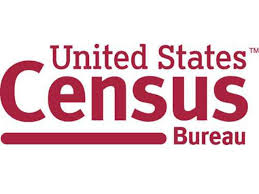
Source: US Census Bureau
Of the thirty largest cities in the country, all but one (Detroit) showed population increases since 2010; an unusual occurrence. In the Top Ten: New York City tops with 8.5 million, up 3.9%; Los Angeles is second at 3.9 million, up 3.6%; Chicago’s third with 2.7 million, up 1.0%; followed by Houston 2.2 million, up 6.7%; Philadelphia 1.56 million, up 2.2%; Phoenix 1.54 million, up 6.3%; San Antonio 1.44 million, up 8.2%; San Diego 1.38 million, up 5.6%; Dallas 1.28 million, up 6.9% and the newest member of the million city club in tenth place, San Jose at slightly over 1 million, up 7.4%. The cities ranked from eleventh to twentieth are showing the most changes in rank as cities in the south and west are exhibiting far greater growth since 2010 than those in the east and Midwest. Afternoons with Amos places Indianapolis’ 934,234 population (the full city/county) in the 11th spot. However Austin, Texas’ soaring population growth has that city crossing the 900-thousand mark at 912,791. In the Census Bureau’s eyes Austin ranks 11th. And with other cities right below Indianapolis growing at faster rates, it’s possible that by the 2020 Census, Indianapolis’ ranking could fall to 17th out of the top cities in the country. Cities Ranked (our calculation) 11 to 20: Indianapolis 934,243 up 3.4%; Austin Texas 912,791 up 15.5%; Jacksonville (a consolidated city) 853,382 up 3.8%; San Francisco 852,469 up 5.9%; at fifteenth Columbus Ohio 835,957 up a stunning 6.2% since 2010. Sixteenth is Fort Worth 812,238 up 9.6%; next Charlotte 809,958 up 10.7%; Detroit 680,250 down 4.7%; the only city in the top 30 to lose population. El Paso is nineteenth at 679,036 up 4.6% and twentieth is Seattle at 668,342 up 9.8%. Ranked 21st to 30th: Denver 663,8621 up 10.6%; Washington DC 658,893 up 9.5%; Memphis 656,861 up 1.5%; Boston 655,884 up 6.2%; Nashville (another consolidated city) 644,014 up 7.1%; Baltimore 622,793 up 0.3%; Oklahoma City 620,602 up 7.0%; Portland 619,360 up 6.1%; Las Vegas 613,599 up 5.1% and thirtieth Louisville/Jefferson County (another consolidated city) 612,780 up 2.6%. Reacting to the 2014 Census estimates and Indy’s place among the potential decline in ranking among the nation’s top cities, Jen Pittman, Mayor Greg Ballard’s Communications Director reminds that “Indianapolis is both rural and urban, primarily because of UniGov.” Pittman believes Indy should look at “Geographies of similar development pattern and size and see how they compare”. Pittman also said “To maintain our competitiveness, it is imperative for the City to continue to create job opportunities, creative spaces, and neighborhoods that are livable, walkable, and offer a variety of different transit options.” Yet cities that have those qualities are the ones outstripping Indy’s growth this decade, pushing our city farther down in major city ranking.
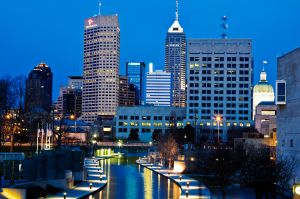
Source: Getty
Here in Indiana, the ranking of the state’s Twenty Largest Cities remained unchanged. Obviously, Indianapolis is far and away the largest city. Second is Ft. Wayne at 258,522; up 1.9% since 2010. Next is Evansville at 120,346 up 2.5%. In fourth place is South Bend at 101,190, literally flat. Next, virtually tied are Carmel (86,682) and Fishers (86,325) separated by just 357 people. But Fishers growth rate since 2010 of 12.4% compared with Carmel’s 9.5% growth rate means that Fishers will surpass Carmel as Indiana’s fifth largest city by next May’s estimates. Rounding out Indiana’s top ten cities are Bloomington in seventh position at 83,322 up 3.6%.; then Hammond 78,384 down 3.0%; Gary 77,909, also down 3.0% and Lafayette at 70,654 up 5.2%. In eleventh spot is Muncie, 70,211 up 0.2%; followed by Terre Haute 60,956 up 0.3%, Noblesville at 57,584 up 10.8%; Kokomo fueled by annexations since 2010 up 25.5% to 57,085; then Anderson 55,455 down 1.2%; Greenwood 54,491 up 9.4%; Elkhart 51,421 up 0.9%; Mishawaka 48,174 down 0.2%; Lawrence 47,550 up 3.4% and the 20th largest Hoosier city Jeffersonville 46,440 up 3.3%. Eleven of Indiana’s Top Twenty cities are located in Central Indiana. And seven of Indiana’s Top Twenty cities are in located in the Indianapolis/Carmel/Anderson Metro Area.









